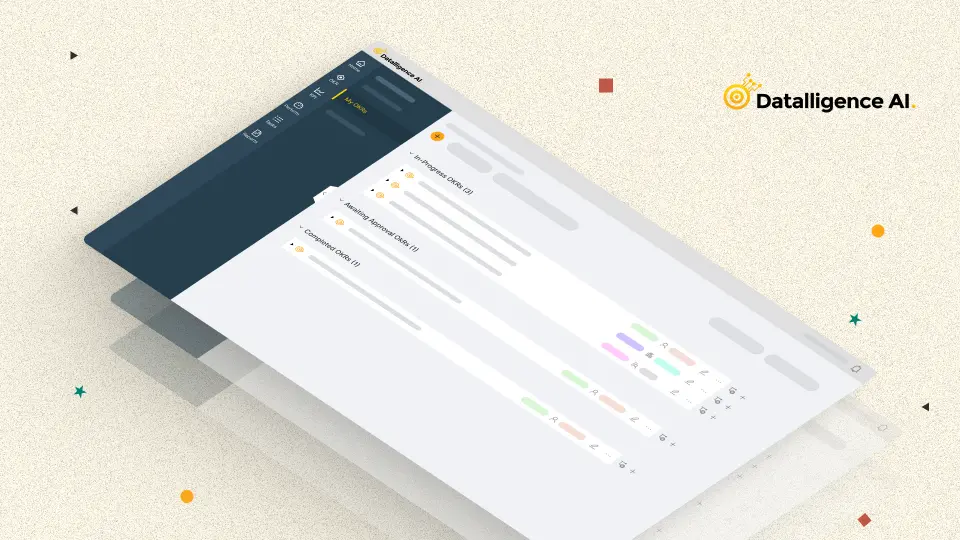Performance management is a critical aspect of running a successful organization. It involves continuous communication, feedback, and goal-setting between managers and employees to ensure optimal performance and achievement of organizational objectives. In this comprehensive guide, we will explore the performance management process, its key steps, and best practices for implementing an effective performance management system within your organization.
Performance management is a collaborative process that involves setting clear goals, monitoring progress, providing regular feedback, and recognizing achievements. It is not a one-time event but a continuous cycle that promotes ongoing improvement and development. By implementing an effective performance management process, organizations can enhance productivity, employee engagement, and overall success.
What is Performance Management Process?
Performance management is an ongoing process of communication and feedback between managers and employees to ensure that organizational objectives are met. It goes beyond traditional annual performance reviews by incorporating continuous feedback and goal setting to drive employee engagement and productivity.
According to Gallup, only a small percentage of employees feel motivated by annual performance reviews. By adopting a continuous performance management approach, organizations can create a culture of regular feedback and development, leading to improved employee satisfaction and performance.
Best Practices for Performance Management
Implementing a performance management process Steps requires careful planning and adherence to best practices. Here are some key tips to ensure the success of your performance management system:
Step 1: Involve employees in goal-setting: Employees should be an active part of the goal-setting process, ensuring alignment with their skills, aspirations, and the organization’s objectives.
Step 2: Provide ongoing feedback: Regular feedback is essential for employee growth and development. Managers should provide constructive feedback and recognize achievements in a timely manner.
Step 3: Foster a culture of continuous improvement: Encourage a growth mindset and a culture where employees feel comfortable seeking feedback and taking initiative to improve their performance.
Step 4: Use technology and automation tools: Leverage performance management software to streamline the process, track progress, and generate data-driven insights. Automation tools can help standardize performance evaluations and ensure consistency.
Step 5: Train managers in effective coaching and feedback techniques: Managers play a crucial role in the performance management process. Provide training and resources to enhance their coaching and feedback skills.
Step 6: Regularly review and update performance standards and goals: As the organization evolves, performance standards and goals should be reviewed and updated to ensure alignment with changing business needs.
Step 7: Encourage employee development: Provide opportunities for skill development and career growth. This can include training programs, mentoring, or job rotations.
Benefits of a Well-Implemented Performance Management Process
A well-implemented performance management process offers numerous benefits to organizations, including:
Improved employee performance and productivity: Clear goals, regular feedback, and coaching help employees stay focused, motivated, and aligned with organizational objectives.
Enhanced employee engagement and retention: A performance management process that values employee development and recognizes achievements fosters higher levels of engagement and reduces turnover.
Identification of high-potential employees: Through ongoing performance evaluations, organizations can identify high-performing employees and nurture their growth for future leadership roles.
Facilitated communication and collaboration: Regular check-ins and feedback sessions promote open communication, trust, and collaboration between managers and employees.
Data-driven decision-making: Performance management systems generate valuable data and insights that can be used to identify trends, address performance gaps, and make informed decisions.
Challenges and Solutions in Performance Management
While performance management is crucial, organizations may encounter challenges in its implementation. Some common challenges include:
- Lack of clarity and alignment: Clear communication and alignment of goals and expectations are essential to avoid misunderstandings and ensure everyone is working towards the same objectives.
- Resistance to change: Employees may resist the performance management process if they perceive it as a top-down approach or fear negative consequences. Communicate the benefits and involve employees in the process to mitigate resistance.
- Inconsistent feedback and evaluations: Inconsistent feedback and evaluations can lead to confusion and demotivation. Ensure managers are trained to provide consistent, constructive feedback and use standardized evaluation criteria.
- Time constraints: Managers may struggle to dedicate sufficient time to the performance management process due to other responsibilities. Streamline the process using technology and automation tools to save time and improve efficiency.
- Lack of ongoing support and development: Performance management should not be limited to annual reviews. Provide ongoing support, coaching, and development opportunities to help employees continuously improve their performance.
How Automation Tools Can Enhance Performance Management
Automation tools can significantly enhance the effectiveness and efficiency of the performance management process. Here are some ways automation tools can help:
- Streamline goal-setting and tracking: Performance management software allows for seamless goal-setting, tracking progress, and real-time updates. This ensures transparency and accountability throughout the organization.
- Standardize performance evaluations: Automation tools provide standardized evaluation criteria, eliminating bias and inconsistency in performance assessments. This promotes fairness and objectivity.
- Generate data-driven insights: Performance management software generates data and analytics that can be used to identify performance trends, strengths, and areas for improvement. This data-driven approach enables informed decision-making.
- Facilitate continuous feedback: Automation tools enable managers and employees to provide continuous feedback, irrespective of geographic location or time constraints. This promotes ongoing communication and development.
- Improve accessibility and documentation: Performance management software allows easy access to performance-related information and documentation. This helps in tracking progress, identifying patterns, and maintaining a comprehensive performance history.
Case Studies: Successful Implementation of Performance Management Systems
Several organizations have successfully implemented performance management system Process to drive employee engagement and improve organizational effectiveness. Let’s take a look at a few case studies:
- Company X: Company X implemented a performance management system that focused on continuous feedback and development. Regular check-ins and coaching sessions helped employees align their goals with the organization’s objectives. This resulted in improved employee performance, increased engagement, and reduced turnover.
- Company Y: Company Y leveraged performance management software to streamline their performance evaluation process. The software provided standardized evaluation criteria, enabling fair and consistent assessments. This led to enhanced transparency, improved communication, and data-driven decision-making.
- Company Z: Company Z integrated automation tools into their performance management process to facilitate ongoing feedback and recognition. Managers and employees could provide real-time feedback and track performance progress. This created a culture of continuous improvement and increased employee motivation.
Tips for Successful Performance Management Meetings

Effective performance management meetings are crucial for fostering communication, setting expectations, and providing feedback. Here are some tips for successful performance management meetings:
- Prepare in advance: Both managers and employees should come prepared for the meeting by reviewing goals, performance data, and any relevant documentation.
- Create a safe and open environment: Foster a safe and open environment where both parties feel comfortable sharing their thoughts, concerns, and feedback.
- Focus on specific examples: Use specific examples to illustrate strengths and areas for improvement. This helps provide clarity and encourages actionable feedback.
- Encourage two-way communication: Performance management meetings should be a dialogue, not a monologue. Encourage employees to share their perspectives, challenges, and suggestions.
- Set clear action steps: At the end of the meeting, establish clear action steps and timelines for improvement or development. This ensures accountability and follow-through.
The Future of Performance Management
The future of performance management is marked by continuous evolution and innovation. Here are some trends and developments to watch out for:
Real-time feedback and recognition: Performance management systems will increasingly focus on providing real-time feedback and recognition to enhance employee engagement and motivation.
Personalized development plans: Performance management processes will incorporate personalized development plans tailored to each employee’s unique skills, aspirations, and growth opportunities.
Integration of artificial intelligence: Artificial intelligence (AI) will play a significant role in performance management, enabling predictive analytics, automated feedback, and personalized recommendations.
Remote performance management: As remote work becomes more prevalent, performance management systems will adapt to effectively manage and evaluate remote teams, leveraging technology and virtual collaboration tools.
Continuous learning and skill development: Organizations will prioritize continuous learning and skill development as part of the performance management process to ensure employees’ readiness for future challenges.
Conclusion
Implementing an effective performance management process is essential for organizations to drive employee engagement, productivity, and overall success. By following best practices, leveraging automation tools, and embracing ongoing feedback and development, organizations can create a culture of continuous improvement and achieve their performance goals. As the future of performance management unfolds, organizations must stay agile and adapt to emerging trends and technologies to stay ahead in a rapidly changing business landscape.
At Datalligence.AI, we offer innovative solutions to enhance your performance management process. Our performance management software leverages automation and AI to streamline goal-setting, feedback, and performance tracking. Contact us today to discover how our solutions can transform your performance management processes and drive organizational success.











